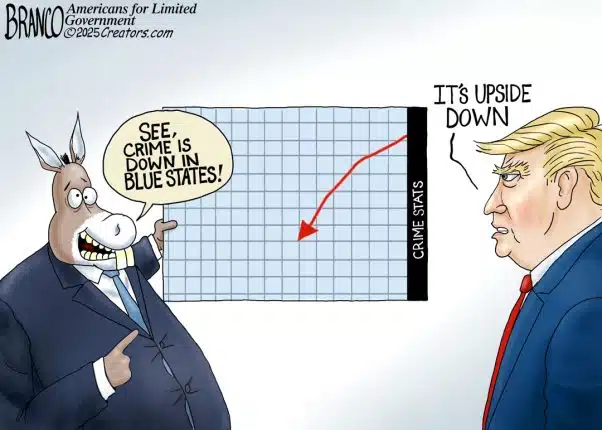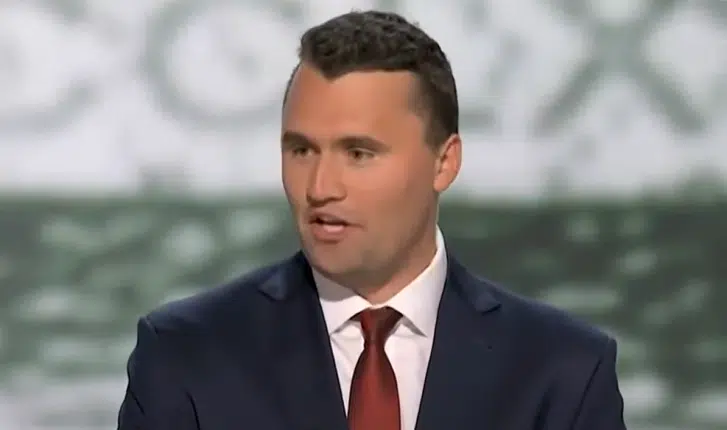By Natalia Castro
President Donald Trump’s presidential victory in Rust Belt states like Michigan, Ohio and Pennsylvania is often attributed to his ability to unite union and conservative households left silenced by poor economic conditions, but recent evidence suggests Trump’s foreign policy could have played a greater role in pushing him to victory than previously suspected.
While Americans in most areas of the country do not have a direct connection with fighting or recently discharged soldiers, in counties which do, voters tend to cast ballots against incumbent parties, indicating they do not want the wars to continue.
In a recently published joint study between Professor of Political Science Dr. Douglas Kriner of Boston University and Associate Professor of Law Dr. Francis Shen of University of Minnesota Law School, the group found that in the Civil War, Korean, Vietnam, and Iraq wars, constituencies that suffered that highest casuality rates were quick to punish the ruling party at the polls.
In 2016, this trend might have made a significant difference in key counties in Michigan, Wisconsin and Pennsylvania, say Kriner and Shen.
The study stated, “What if each of these states had suffered a lower casualty rate – for example, that of neighboring New York? …In each state, our analysis predicts that Trump would have lost between 1.4 percent and 1.6 percent of the vote if the state had suffered a lower casualty rate… such margins would have easily flipped all three states into the Democratic column. Trump’s ability to connect with voters in communities exhausted by more than fifteen years of war may have been critically important to his narrow electoral victory.”
President Trump’s vocal opposition to Clinton’s pro-war policies, then, made him the “peace candidate” in the election. Although with the twist of building up the military with the goal of avoiding war, making Trump’s foreign policy resemble Ronald Reagan’s “peace through strength” plan, a slogan he often used on the campaign trail.
The New Republic’s Jeet Heer explained in 2016 shortly after the New Hampshire primary how Trump was able to reach out to the Republican voter who did not agree with the invasion of Iraq. He wrote, “There were countless Republicans who had doubts about the Iraq war and its consequences but kept quiet for the sake of partisanship. Trump allows those disaffected Republicans, who were unhappy with the Bush years and also by the actions of the Republican establishment, to have a voice — and it’s earned him a large, devoted following.”
Operation ‘Daisy’
In a hard-hitting campaign ad by Phyllis Schlafly’s Eagle PAC, “Scarier,” Hillary Clinton was featured at the second presidential debate on Oct. 10, reminding viewers that, “I, when I was Secretary of State, advocated, and I still advocate today, a no-fly zone and safe zones [in Syria]. We need some leverage against the Russians.”
Here, Clinton was attempting to project a strong stance against the Assad regime in Syria, which is allied with Russia. Russia has had its naval base at Tartus since 1971, its only naval port in the Mediterranean Sea.
The video cut to Green Party presidential nominee Jill Stein appearing on C-Span on Oct. 12, 2016, warning that “It’s now Hillary Clinton who wants to start an air war with Russia over Syria by calling for a no-fly zone. We have 2,000 nuclear missiles on hair-trigger alert, and Mikhail Gorbachev, the former premier of the Soviet Union is saying we are closer to a nuclear war than we have ever been.”
The video continued to show U.S. Marine Gen. James Dunford, chairman of the joint chiefs of staff, who testified to the Senate Armed Services Committee on Sept. 22, 2016 affirming that Clinton’s plan would essentially force the U.S. to go to war: “Right now, senator, for us to control all of the airspace in Syria would require us to go to war — against Syria and Russia.”
Then, the video shifted back to Stein, contrasting Clinton and Trump, “[O]n the issue of war and nuclear weapons and the potential for nuclear war, it’s actually Hillary’s policies which are much scarier than Donald Trump, who does not want to go to war with Russia.”
Next, it replayed Clinton, saying, “and I advocate today a no-fly zone,” followed by the shocking footage of a real hydrogen bomb explosion, imitating the famous 1964 “Daisy” ad. The video ended with the printed words, “Any questions?”
The reactions to the ad appeared to affirm the study done under Kriner and Shen, indicating that the anti-war voting bloc was very receptive to this message. Comments on the Eagle video showed the clear range of Americans fears of Clinton starting World War III, with testimonials ranging from “That’s it. I’m voting Trump. Jesus Christ. I’m voting for Donald Trump. God help us all.” And “She wants war with Russia and China. Meanwhile Trump wants to improve relations with them. The last thing we need is another cold war or worse and that’s what Hillary will do. She’s a war monger.” To simply, “She will kill us all…”
“The response was overwhelming, with thousands of shares and tag-shares (tagging a friend in the comments section to target a single friend to see the ad) ranging from potential Clinton supporters disappointed with her position to those who were now actively flipping to Donald Trump,” Phyllis Schafly’s Eagle PAC President Ed Martin said.
“Given the small margin of victory in Michigan, just 13,000 votes, and in Pennsylvania, just 68,000 votes, any work targeting a key Clinton constituency in the final week, in this case young people weary of wars in the Middle East, was of critical importance. The ads were hitting Facebook feeds just as the Trump surge was taking place. The video was viewed 46,508 times in Michigan, and 35,982 times in Pennsylvania,” Martin added.
But strangely enough these users targeted by the “Scarier” ad were not your typical Trump fans. Instead, Phyllis Schlafly’s Eagle PAC ad was targeted at those who one might not expect to support Trump: 18 to 40 year-old’s who had Bernie Sanders, Apple, or Netflix as Facebook interests in states such as Michigan, Pennsylvania, Maine and Virginia.
In the states that the aforementioned study found had significant wartime casualty rates, such as Michigan and Pennsylvania, the ad went viral.
While union and conservative households in the Rust Belt states of Michigan and Pennsylvania worried about job growth, bad trade deals and critical of immigration certainly held a significant base of Trump’s support, the anti-war stance seemed to have ignited silent, even younger voters which may have helped put Trump over the top in swing states. Trump could owe his presidency to the stand he took against Clinton on Syria.
Something the Kriner and Shen study notes, stating, “There are many implications of our findings, but none as important as what this means for Trump’s foreign policy. If Trump wants to win again in 2020, his electoral fate may well rest on the administration’s approach to the human costs of war. Trump should remain highly sensitive to American combat casualties, lest he become yet another politician who overlooks the invisible inequality of military sacrifice.”
After conflict escalation, Trump tries to cool tensions in Syria with Russia
So far, the position Trump took in the campaign may be paying off. In his first weeks in office, Trump began implementing his plan to strengthen the country’s military, keeping the peace by preparing the American people for war. Trump immediately put Iran on notice following a missile test that appeared to have violated United Nations Security Council resolutions and Defense Secretary James Mattis has travelled to Asia to reinforce the U.S. position on the South China Sea; through strong decisive messages, Trump has strengthened the U.S.’s global positions and put other nations like North Korea on notice.
But most importantly, Trump appears to be keeping his promise on Syria, but not before the very escalation he warned against appeared to be unstoppable.
When tensions heightened following a chemical attack by Syrian President Bashar al-Assad against his own people in April, Trump order Tomahawk missile strikes on the air base the plan was said to have originated from. Within a month, the U.S. had also shot down a Syrian war plane said to be targeting anti-Syrian regime forces. In late June, the U.S. continued pressuring the Assad regime on chemical weapons. In the meantime, a limited number of U.S. ground forces have been in Syria since late 2016, fighting Islamic State in and around Raqqa.
While these incidents and escalation appeared to increase the risk of war, Trump remained firm in his commitment to work something out with Russia on Syria despite the head winds Trump faces domestically with the ongoing Mueller investigation into Russia’s alleged interference in the U.S. election.
President Donald Trump and Russian President Vladimir Putin were able to meet in early July at the G20 to arrange a ceasefire in Syria, which so far appears to be holding.
In subsequent action, Trump ended unsuccessful and combative initiatives aimed at equipping and training rebels to fight Assad as a part of that ceasefire. This move allowed Trump to show initial military strength but in the longer term, may have set the stage for the meeting with Putin to ratchet tensions down, instead attempting to focus efforts of both countries on the common enemy of Islamic State.
The American people who voted for Trump in the swing states of Michigan, Pennsylvania and Wisconsin that ultimately wanted Trump to be president wanted peace, proving this constituency was and is strong — and has been largely ignored by pro-war presidents over the last two decades. Now, Trump is following through on his promise to achieve peace through strength, a doctrine created by Reagan and adopted by Trump. For everyone’s sake, that might help keep the peace between the U.S. and Russia, and politically, it could pay off — if Trump keeps his promise and keeps the U.S. out of Syria. Time will tell.
Natalia Castro is a contributing editor at Americans for Limited Government.






